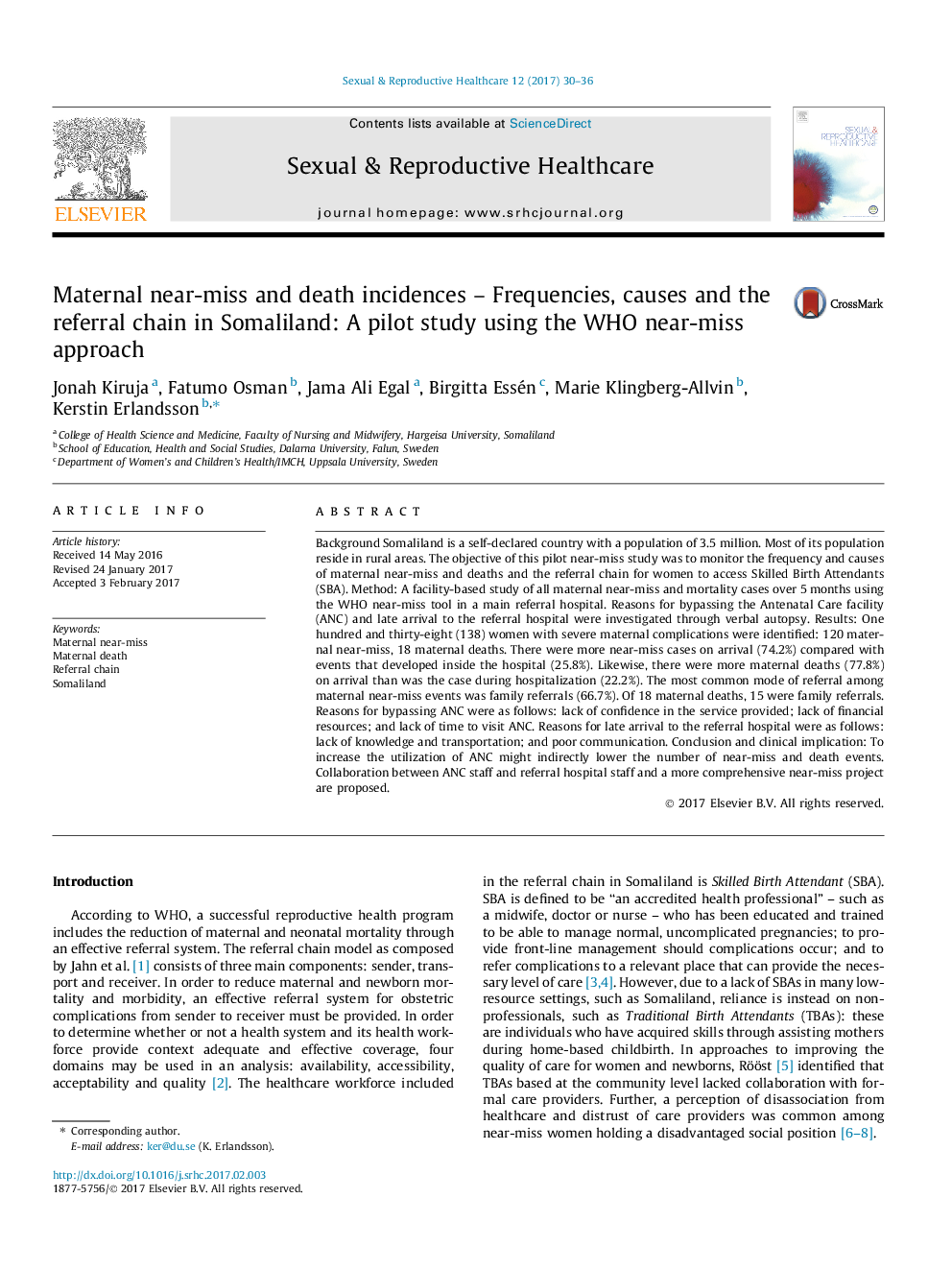| Article ID | Journal | Published Year | Pages | File Type |
|---|---|---|---|---|
| 5565986 | Sexual & Reproductive Healthcare | 2017 | 7 Pages |
Abstract
Background Somaliland is a self-declared country with a population of 3.5 million. Most of its population reside in rural areas. The objective of this pilot near-miss study was to monitor the frequency and causes of maternal near-miss and deaths and the referral chain for women to access Skilled Birth Attendants (SBA). Method: A facility-based study of all maternal near-miss and mortality cases over 5Â months using the WHO near-miss tool in a main referral hospital. Reasons for bypassing the Antenatal Care facility (ANC) and late arrival to the referral hospital were investigated through verbal autopsy. Results: One hundred and thirty-eight (138) women with severe maternal complications were identified: 120 maternal near-miss, 18 maternal deaths. There were more near-miss cases on arrival (74.2%) compared with events that developed inside the hospital (25.8%). Likewise, there were more maternal deaths (77.8%) on arrival than was the case during hospitalization (22.2%). The most common mode of referral among maternal near-miss events was family referrals (66.7%). Of 18 maternal deaths, 15 were family referrals. Reasons for bypassing ANC were as follows: lack of confidence in the service provided; lack of financial resources; and lack of time to visit ANC. Reasons for late arrival to the referral hospital were as follows: lack of knowledge and transportation; and poor communication. Conclusion and clinical implication: To increase the utilization of ANC might indirectly lower the number of near-miss and death events. Collaboration between ANC staff and referral hospital staff and a more comprehensive near-miss project are proposed.
Keywords
Related Topics
Health Sciences
Medicine and Dentistry
Obstetrics, Gynecology and Women's Health
Authors
Jonah Kiruja, Fatumo Osman, Jama Ali Egal, Birgitta Essén, Marie Klingberg-Allvin, Kerstin Erlandsson,
